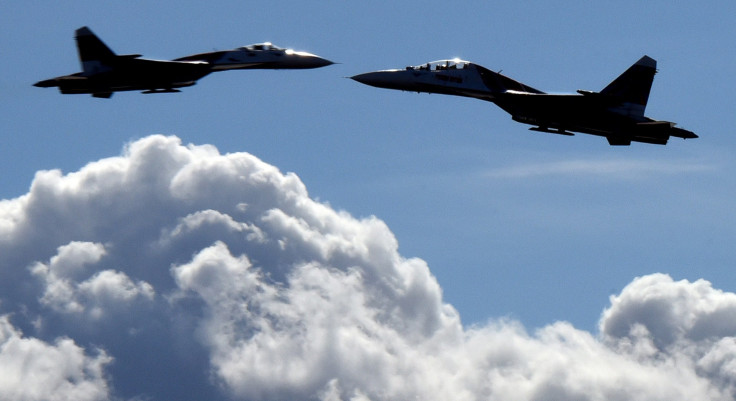Russian Su-27 Jet Flew Within Feet Of US Surveillance Aircraft, Footage Shows

The U.S. military released a video of a Russian Su-27 fighter jet flying close to American Navy ЕР-3Е Aries II surveillance plane, over the waters of Black Sea on Monday.
The five-seconds-long video was released Tuesday, as evidence to back the statement regarding the incident released by the Department of State, in which it claimed a Russian Jet “engaged in an unsafe interaction with a U.S. EP-3 in international airspace, closing to within 5 feet (1.5 meters) and crossing directly in front of the EP-3’s flight path.”
“This is but the latest example of Russian military activities disregarding international norms and agreements,” the statement further added, calling on Russia “to cease these unsafe actions.”
The Pentagon also said the interception by the Russian jet continued for an hour and 40 minutes.
Russia’s RIA news agency, which first reported the encounter, quoted the Russian defense ministry as saying its fighter jet’s path was in “accordance with the international rules for the use of airspace.”
The ministry also claimed the action taken by the Russian pilots in charge of the jet was well within the standards of training, as they attempted to "stop [the US plane] from violating the Russian Federation's airspace."
The incident took place after the Russian fighter jet rushed to intercept an unidentified flying object speeding toward their state border, RT reported. The Russian military stated after discovering the object to be ЕР-3Е Aries II, the pilots followed the plane at a “safe distance” till it moved away from the border.
“After the surveillance plane of the U.S. Navy had changed its course to move away from the border, the Su-27 returned to its base,” the statement further added.
The state department, however, refused to accept the interception was carried out in a safe manner, as the jet’s proximity forced “the EP-3 to fly through the Su-27’s jet wash.”
Since Russia annexed Crimea in 2014, tension in the airspace shared by Russian and NATO-allied forces have increased considerably.
"The Russian military is within its right to operate within international airspace, but they must behave within international standards set to ensure safety and prevent incidents,” the U.S Navy said in a statement regarding the incident, BBC reported.
In a similar encounter, a Russian Su-30 fighter jet intercepted a U.S. Navy P-8 Poseidon surveillance plane Dec. 23, 2017, which was deemed “unsafe” by the Pentagon.
At the time, the Russian jet had passed within 50 feet of the aircraft, using its afterburners, which caused the U.S. Navy aircraft to enter the former’s jet wash. As a result, the aircraft experienced “a 15-degree roll and violent turbulence.”
“The U.S. aircraft was operating in international airspace and did nothing to provoke this Russian behavior,” a spokeswoman for Pentagon, Lt. Col. Michelle Baldanza, said. “Unsafe actions have the potential to cause serious harm and injury to all aircrews involved.”
© Copyright IBTimes 2025. All rights reserved.






















